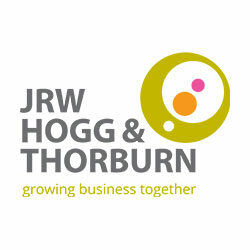INCORPORATING YOUR BUSINESS – The Hidden Tax
You are looking to incorporate your business and you’ve heard that any resulting tax charges can be legitimately mitigated. However, there is tax to pay as Kevin Crowford shows in his latest blog.

Undoubtedly one of the main reasons for transferring a sole trader business to a company in which you own shares is tax saving. You’ve probably read articles about the process, and how it’s possible to legitimately avoid paying capital gains tax (CGT) through the use of special claims. However, what’s invariably overlooked is the possible stamp duty and stamp duty land tax (SDLT) charges which can apply in England and are far more difficult to shake off. (Please note in Scotland SDLT is replaced with LBTT – Land and Buildings Transaction Tax where different rates are applied).
When you transfer land, buildings or other assets (and even liabilities) to a company you’re connected to it’s treated by HMRC as purchase at market value. Your company is therefore liable to pay SDLT if the value exceeds the nil rate band.
For example
John runs a business from a retail unit located in England, he owns the freehold which is valued at £300,000. He transfers his business to AAA Ltd; he owns all the shares. AAA is liable to Stamp Duty Land Tax of £4,500 (£150,000 x 0% + £100,000 x 2% + £50,000 x 5%). This was a tax bill John hadn’t bargained for, but is there anything he could have done to avoid or reduce it?
Solution – The simple solution would have been for John to retain personal ownership of the property and transfer only the other business assets. He can still use a special tax claim to avoid any CGT. The trouble is he may miss out on other possible tax advantages that go with company ownership of the property.
An anomaly of the SDLT rules is that a partnership which transfers land or buildings to a company can make use of a relief that reduces the chargeable amount in proportion to which the partners are connected to the company.
For example, if 50% of the partners are connected with the company to which the property is transferred (director shareholders are connected to their companies), then their share of the property will not be subject to SDLT.
Top Tip
Spouses and close family members are connected persons for tax purposes. Therefore, where one spouse is connected to a company, say because they are a director, the other spouse is also connected. This means that where a married couple are in partnership and property is transferred to a company, only one of them needs to be connected to the company to obtain SDLT relief.
Therefore, full relief from SDLT is given whenever a family partnership transfers property to a company and at least one of the partners owns all the shares in the company.
Watch for anti-avoidance
HMRC has tough anti-avoidance rules which allow it to disapply the relief where the creation of a partnership was for the purpose of dodging SDLT. Therefore, if you want to rely on the relief, the longer your business operates as a partnership the less likely it is that HMRC will be able to successfully challenge you.
Conclusion
Whilst it’s almost always possible to avoid capital gains tax when incorporating a sole-trader business, stamp duty land tax (SDLT) applies to the transfer of property. It can be avoided by retaining personal ownership. Or if your business operates as a partnership for a significant period, special relief can reduce or wipe out any SDLT.
If you are planning to incorporate your business, please don’t hesitate to get in touch and we can advise you on the best approach in your own individual circumstances.
